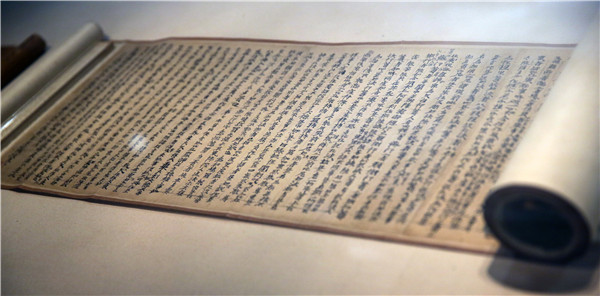Master of glue
 |
|
JIANG DONG/CHINA DAILY |
First established in 1909 as China's first national-level modern library, the National Library now has royal book collections from all the dynasties since the Southern Song Dynasty (1127-1279).
The library's most highlighted collections include the Dunhuang manuscripts, which were found in the Mogao Grottoes in Gansu province in 1900; Zhaocheng Jinzang, a group of Buddhist canons, which were printed during the Jin Dynasty (1115-1234) and were once hidden in a coal mine to stop them from falling into the hands of the Japanese during the War of Resistance Against Japanese Aggression (1937-45); and Yongle Dadian, edited after an edict by a Ming Dynasty (1368-1644) emperor in the early 15th century, which remains the world's largest paper-based general encyclopedia.
Pan Fei, 28, has worked at the library for four years after graduating from the Jinling Institute of Technology in Nanjing, Jiangsu province.
She majored in ancient-book restoration. Her class had 39 students, but only 10 now work in libraries and museums nationwide.
Her course in college included literature, philology, ancient Chinese classics like The Analects of Confucius, library studies, museology, and computer programming. Not all of that is directly relevant to her day-to-day work.
Speaking about her course, she says: "The major was newly set up. Our school was still exploring what was needed to train a qualified restorer. The result was: We learned everything."
The work of restoring is highly collaborative, and restorers rely on each other for advice and assistance.
Pan says most of her colleagues will probably stick to the work for a lifetime, forming personal connections almost as strong as family ties.
Pan, who learned singing and ballet in childhood, says she still attends a chorus in her spare time to preserve her ties with music.
"The reason why my friends go to the chorus is that they are looking for self-satisfaction, which is absent in their jobs. I'm luckier. Once you fix a book, it's really something satisfying."
Besides working together, the restorers also eat together, using the byproduct from starch production. Once the starch has been removed from the dough, the remainder is wheat gluten, a staple of the Chinese diet.
"Fried gluten is really delicious," says Li. "You have to put it into the fridge first, and then cut it into slices. I like it with chili pepper."
Liu Yixi contributed to this story
Contact the writer at wangkaihao@chinadaily.com.cn
















